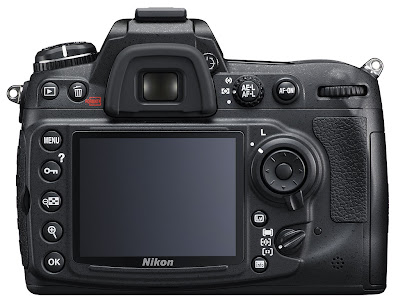Yesterday (3-22-13) I was in Atlanta waiting on film to be developed when I decided to test out the new D7100. I went to my usual stomping grounds at Showcase Photo and Video. Here is a quick review of what I found.
Images Courtesy of Nikon
Unfortunately I did not have my own memory card so I could not share the images here.
The Nikon D7100 is a 24 mp DX sensor with no low pass filter. Nikon claims that after a certain pixel density the OLPF is no longer needed. For those who don't know the Optical Low Pass Filter prevents the appearance of Moire which is a form of aliasing that occurs when an bayer pattern sensor is used to capture fine fixed patterns. (Fabric usually causes moire patterns to manifest on high density sensors.)
This is the first thing I tested. I looked for a subject that would be the most likely candidate to manifest moire and snapped a few shots. No moire visible. Granted there was not too many objects that could cause moire in the store.
My next test was noise performance. The D7100 performed pretty well in my tests of low light, high ISO but noise was noticeable at ISO 3200 with standard factory settings. I believe it was because of 24 million + pixels on a 1.5 crop sensor. Still it wasn't overly present to make the image unusable. Makes my D300s look like course sand paper by comparison.
After this I went to video. Video performance was pretty good. The D7100 has full manual controls with a built in stereo mic right in front of the hot shoe. It does not, however, have manual aperture control in live view. I noticed a quirky habit of this camera while using the 18-105mm f/3.5-5.6 VR lens that is featured in the kit. When I set my aperture at 5.6, like I do on my D300s to prevent changing exposure while zooming, the aperture went from f/5.6 at 18mm to f/9 at 105mm. This is the only camera I have experienced this on. Perhaps this can be fixed by a firmware update, but it is annoying.
 |
| D7100 Rear Panel |
A few other things I noticed during the test of this camera-
Auto focus was fast and accurate even in low light.
The shutter was remarkably quiet in normal modes.
The body was really light weight compared to my D300s - most likely caused by the camera being 50% plastic compared to magnesium alloy of the D300s.
Write speed was quick even on a class 4 SD card.
Image quality is superb.
Summary:
Pros-
- High resolution 24mp sensor
- No OLPF for increased sharpness
- Light weight body
- Fast AF
- Uses almost any Nikkor lens due to built in focus motor
- Full HD video with manual controls of image and sound
- Quiet shutter
- Two SDXC card slots U1 compatible
- Mic and Headphone jacks
- Weather sealed
- Price - Kit is less than the D300s body only
Cons-
- Not fully magnesium alloy like the D300
- No dedicated ISO, WB or ISO button (shared with other buttons)
- No LCD protector ( trust me its necessary)
- Full Auto Mode*
- Focus Mode Selector**
- No AF ON button***
- No dedicated metering mode dial.****
Overall the D7100 is a great camera that is capable of producing breathtaking images in the right hands. Nikon is testing the water on some of these features and it seems to be working out. This would be a great upgrade for someone owning an entry level camera or a great back up to a D800 or D4.
 |
| The back of the D300s for comparison |
|
|
|
|
* I believe that no pro camera should ever have a full auto mode. This is a recent trend in Nikon cameras, Starting with the D800, which should be stopped IMHO. I call this pro because NIKON claims this is the new DX flagship camera. (Unconfirmed reports say that Nikon Europe doesn't designate this as the flagship. D400 Maybe!?! )
** Focus mode selector is a push button on the AF/MF switch. I prefer the one on the D300s, pictured above, under the multi selector.
*** The AF On button is a real help when focusing in live view. Many pro-togs I know set it to be the only focusing mode to prevent others from using their cameras.
**** The metering mode dial allows me to switch from matrix metering to spot or center weighted with out even thinking. Having to press a button and rotate the command dial is annoying for me especially in quick shooting situations.




















